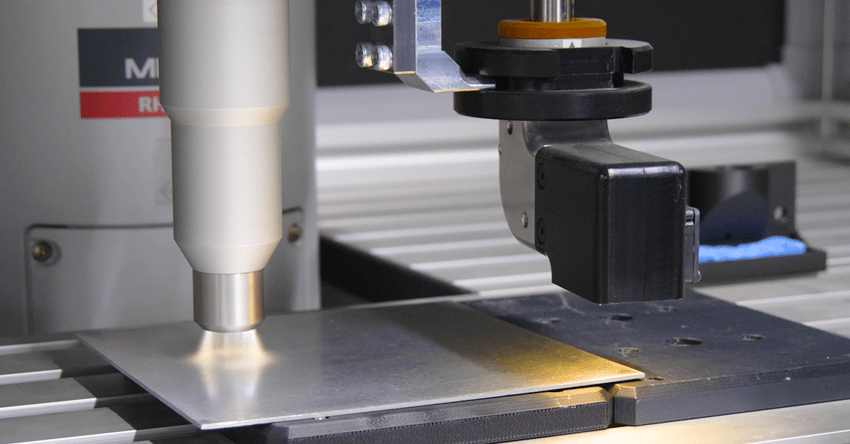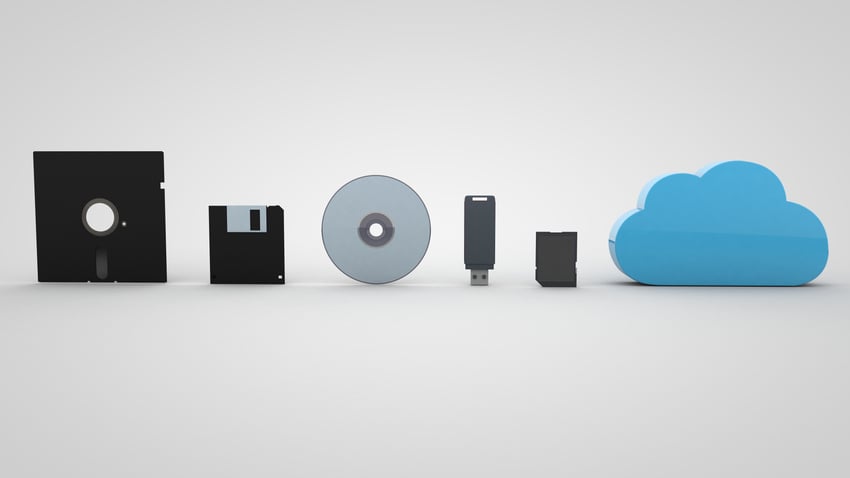It's important to recognize that assuming control over the future based on past or present circumstances is a common misconception. The events of 2020 have taught us a valuable lesson - we should never be overconfident enough to believe that we can predict the challenges that lay ahead.
Furthermore, it's important to remember that even though we may not know the specifics of what's to come, we can still take steps to prepare for the unexpected. By staying informed and adaptable, businesses can respond effectively to challenges and remain vigilant and proactive in their approach to the future.
The idea of Industry 4.0, also known as the 4th Industrial Revolution or the "Factory of the Future," is the approach taken by manufacturers to adapt to the challenges faced in 2020 and prepare for any future obstacles that may arise. This methodology has enabled manufacturers to stay afloat and thrive in the current landscape.
One answer to achieving an agile production process that adapts smartly to new and even earth-shattering changes (this is the dream of Industry 4.0) lies within process control, validation, and monitoring. The collection and transfer of quality data can unlock new pathways to production efficiency, throughput acceleration, process innovations, root cause analysis, product performance failure avoidance, and zero defect manufacturing.
In short, optimized data equals lower costs and higher yields.
This article explores the concepts of zero-defect manufacturing and Industry 4.0, highlighting their shared objective of revolutionizing traditional manufacturing practices. Leveraging cutting-edge technologies, data intelligence, and innovative quality management methodologies, both concepts seek to enhance performance, minimize downtime, and boost competitiveness in the market.
Optimize the power of next-gen connectivity with data & surface intelligence.
What is Zero Defect Manufacturing (ZDM)?
Zero-defect manufacturing is a quality management philosophy that lays the foundation for both lean production and Six Sigma. ZDM is a process that aims to eliminate defects in the production process. It is a critical aspect of modern manufacturing that ensures that every product that comes off the assembly line is of the highest quality possible.
The concept of zero defects was first introduced by a quality control expert named Philip Crosby in the 1960s. Crosby believed that the only acceptable level of defects in a manufacturing process is zero because the cost of defects in manufacturing can be high. For example, defects can lead to increased production costs, lower productivity, and reduced customer satisfaction. Defects can also lead to rework, scrap, and warranty claims, which can add to significant costs over time. According to a study by the American Society for Quality, the price of poor quality in manufacturing can be as high as 15-20% of total revenue.
What is Industry 4.0?
The concept of Industry 4.0 (sometimes referred to as the 4th Industrial Revolution or “Factory of the Future”) is fueled by globalization, modern information systems, and global connectivity, as well as the mobility of people, goods, and capital. Industry 4.0 is often called the “age of data” and is adopting cyber-physical systems, including connected, intelligent, integrated, self-learning, and automated systems. In addition, industry 4.0 aims to optimize computer capabilities to create more innovative, more productive, and less wasteful processes.
The correlation between Industry 4.0 and Zero Defect Manufacturing lies in integrating advanced digital technologies to enhance manufacturing processes and achieve higher efficiency, quality, and sustainability. Industry 4.0 embraces digital connectivity, IoT, AI, ML, and big data analytics, essential for implementing Zero Defect Manufacturing strategies.
Zero Defect Manufacturing aims to predict and prevent defects in production using these advanced technologies, resulting in increased autonomy in controlling product and process quality. Furthermore, as a part of the Industry 4.0 revolution, Zero Defect Manufacturing utilizes digital intelligence to achieve zero-defect production and meet the increasing demand for mass customization in manufacturing.
Inspiring Data Documentation Styles to Fit the Modern Digital Age
A good way to think about the transition between each industry epoch is to examine where data exists in each industrial iteration.
Industry 2.0
The progression from paper to electronic documents revolutionized the sharing and storage of information. Data digitization has allowed for more extensive sharing and storage of information. This has not only increased efficiency but has also helped in reducing the costs associated with paper-based systems.
Industry 3.0
In the third phase of industry development, known as Industry 3.0, electronic documents are compiled and analyzed to identify trends. This process has allowed users to gain valuable insights and make informed decisions based on data.
Industry 4.0
In the era of Industry 4.0, metadata is swiftly collected and exchanged. Cutting-edge sensors and algorithms with machine learning facilitate speedy decision-making for humans. Moreover, these observations can be promptly integrated into process enhancement.
We currently find ourselves amidst the metadata era, and Industry 4.0 presents a departure from the document-oriented approach. This does not necessarily mean that documentation is to be discarded altogether, but rather, it implies that data should not be viewed in the same linear fashion as paper or PDFs. Unfortunately, the overwhelming amount of data available can make it challenging to identify critical information and decipher its meaning, resulting in a failure rate of 70% among manufacturing companies attempting to adopt Industry 4.0.
To succeed in today's competitive market, manufacturers must adopt a dynamic data collection, sharing, and analysis approach.
This looks like the accumulation of data pertaining to their products' success. Anything that can be measured is fair game, including temperature, strength, topology, and surface quality.
What we mean by surface quality is the preparedness of a material surface for bonding, coating, sealing, printing, painting, or just being clean of all organic contaminants that could hinder adhesion and performance.
In this sense, surface quality is a chemical state that is extremely difficult to measure in production. Most equipment sensitive to the molecular changes that affect the surface quality is very limited in its ability to be used “near to action” - a crucial aspect of Industry 4.0.
If you can’t measure quality on actual parts in real time, you will be left behind. But manufacturers must overcome these data problems to usher in their futures.
Rethink your adhesion manufacturing processes with Surface Intelligence.
Applying Digital Assets to Manufacturing Production Lines
In the realm of technology, digital assets are not as complex as they may appear to be at first glance. Essentially, any form of content that can be electronically stored and distributed qualifies as a digital asset. These can range from a simple time stamp to more intricate items such as videos, images, or water contact angle measurements used to gauge the cleanliness of surfaces before adhesion or after cleaning procedures.
In the world of Industry, the transition from 3.0 to 4.0 heavily relies on acquiring and applying digital assets. As a result, many manufacturers have taken to automating their production lines, signaling a crucial move towards smarter manufacturing practices. With automation comes the potential to integrate cutting-edge technologies, driving the evolution of advanced manufacturing processes.
In the quest to achieve high-rate, zero-defect production, manufacturers are increasingly relying on innovative and unconventional technologies. However, it's important to note that the true game-changer in manufacturing processes lies in the adaptability, flexibility, and responsiveness of these technologies and the invaluable insights they provide through data analysis.
Robots alone will not save us. Automating a flawed process often merely speeds up the production of poor-quality parts. Manufacturing processes that include automated data analysis allow actions to be taken faster and as far upstream as possible to prevent significant disruptions. It’s not just riveting, surface treatment, adhesive application, curing, or other traditionally manual processes that we should be automating.
Gathering data on part quality at each Critical Control Point (CCP) in the production process, starting from the supply chain to taking inventory of each part and eventually to finishing procedures, is crucial. This data is essential in constructing a comprehensive perspective of the actual condition of material surfaces and the resulting product quality in a real production setting.
Transforming Quality Through Inline Predictive Analytics
A key characteristic of high-quality manufacturing processes that achieve an Industry 4.0 level of production is data collection, which occurs where the action is. This approach is also known as a "near-to-action" strategy that simplifies the complex concepts of cloud computing, artificial intelligence, virtual and augmented reality, and the ubiquitous Internet of Things (IoT) into practical solutions.
These advanced tools are only as cool as they purport to be if they produce results.
One significant benefit of adopting an Industry 4.0 methodology is that it offers a considerable advantage of providing advanced analytical capabilities to mid-sized and smaller companies. In addition, digitizing data makes it more affordable to collect and distribute, which helps to create a more equal playing field.
While some companies may suggest that purchasing all the latest gadgets is necessary to claim an Industry 4.0 facility, this simply is not true.
The truth is that Industry 4.0 is more about integrating the collaborative, decentralized, and entrepreneurial mindset of the digital age into the manufacturing sector. The overarching goal is to enable every level of the organization to focus on continuous improvement, innovate swiftly, and respond to unexpected changes without incurring extra expenses. By utilizing predictive analytics, it is possible to proactively prevent potential failures and make precise adjustments, big or small, with little room for guesswork. With comprehensive insight into the details of your manufacturing process, you can identify areas that require modification to address new circumstances and anticipate the impact of those adjustments on other interconnected operations.
Example of Industry 4.0 Implementation
The best way to understand this is to start with a current problem or issue you want to avoid. Look for the gaps in your current process.
For example, let's consider the case of an automotive manufacturer who aims to reduce the weight of a new design by a certain percentage. To achieve this, they opt for constructing a lightweight composite frame instead of steel and further implement an adhesive bonding process to eliminate metal fasteners from the design. To ensure the success of this new adhesion process, the manufacturer knows that plasma treatments play a significant role. In line with Industry 4.0 initiatives, they install automated atmospheric pressure plasma equipment throughout their facility. However, to fully adhere to the Industry 4.0 approach, they must collect data on all these new processes. They must question the surface quality of the composite materials and acquire data to confirm that the plasma treatments consistently create a bondable surface.
With a smart sensor attached to the automated system, they can immediately assess the quality of the composite surface before and after treatment, send that data across the world, or to the manufacturing execution system to make automatic adjustments or flag trends. Now, the automotive manufacturer is building a more secure system with a level of self-regulation that it didn’t have before.
Plasma treatment systems and other equipment are bound to drift out of specification with regular use. However, manufacturers can safeguard their investments in both new and legacy machines by incorporating sensors that not only detect drift but also accurately quantify it. Furthermore, by integrating these checks into the process, the equipment can be better connected and ensure it runs optimally.
Employing an Industry 4.0 approach to tackle these issues strategically will result in benefits beyond production.
Creating a Scalable Solution
It’s well known that manufacturing processes and production systems are interconnected, and even a minor alteration at one end can result in significant consequences at the other.
To address this, everyone involved in the manufacturing process and quality improvement needs data-driven solutions that provide real-time information about the ongoing operation and its overall impact. In addition, a universal language is essential for better communication between Research and Development teams during testing and design, technicians overseeing the actual procedures, and remote employees and management who may not be physically present on the factory floor.
To ensure effective control of each critical stage in the manufacturing process, it is essential to gather specific data that correlates with the respective control point. The data collected should compensate for other relevant steps and be done in real time. Although this may seem daunting, categorizing the CCPs based on the data's usability reveals a pattern that integrates the entire process seamlessly.
Prevent
Early data collected during the initial development is important and known as preventative analytics. It serves as a foundation for achieving flawless output by defining the end product and the necessary steps to get there. In addition, this data sets the tone for future analytics; corrective action can be taken if challenges arise.
Predict
The subsequent stage in the process is predictive analytics, which offers valuable insight into how well-equipped manufacturing operations are to handle real-life situations. This can be a preliminary inspection before an established abrasion step or a cleanliness measurement before storing a part. This valuable data helps in adapting and anticipating changes, making processes more agile.
Validate
Validation analytics are essential for validating a process's effectiveness. For example, when a fluoropolymer has been laser etched, a simple contact angle measurement can confirm that the part is now chemically reactive enough to be adhered to, demonstrating validation analytics in action. This data is typically gathered at the most active stages of the process, although it can also be collected during post-production monitoring. It can take the form of hydrophobicity verification for coatings or uniformity measurements.
Optimize the power of next-gen connectivity with data & surface intelligence.
The Future of Zero-Defect Manufacturing
Increasing precision, efficiency, technology adoption, and expanding the idea of what manufacturing can be requires creativity but is not as difficult or far off as it may seem.
Shifting mindsets about how to lean into the magnificent connectivity that already exists in most manufacturing processes will allow companies to mine those processes for nascent data just crying out to be developed and put to good use.
It’s all right there, and Industry 4.0 is a fancy term for looking where manufacturers haven’t looked before to improve their processes.
To learn how surface intelligence is a new strategy that will enable zero-defect manufacturing, download the eBook Digital Transformation: Why it’s real. Why it matters. And why you need it now.








